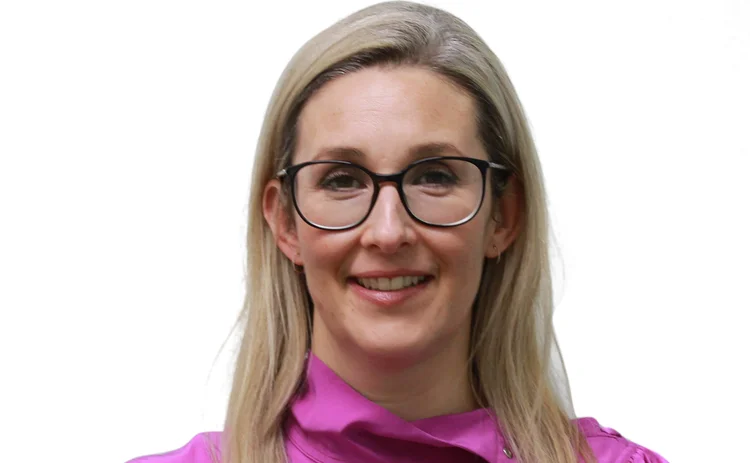
QBE's Cécile Fresneau on turning data into actionable information

While as an industry we hold large volumes of data and information, actually having valuable, reliable, timely data that is informative and can be turned into insight and action is a different thing altogether, particularly in an industry where many of us are working with legacy infrastructure, argues Cécile Fresneau, executive director, UK, QBE.
It is a challenging undertaking, but there are steps we can take as an industry to reach that next level to improve what we can offer our customers.
A greater sophistication of data analytics starts with having quality data in the first place. It may sound simple, but this first step requires hard, long, relentless work to put in place data lexicons and definitions, and develop holistic systems for the capture, processing, and extraction of data. We need a view of what information is required, for what purpose, and how to capture it. Sales people, underwriters, claims staff and those on the frontline are often the first point of data capture and, therefore, need to be clear on what data needs to be captured, how this is done, and how it is of benefit to them and the customers they serve.
Last year, in an article for Post, I spoke about why insurers ask so many questions to brokers and their customers when placing risks. And undoubtedly, asking questions is critical to better understand a customer’s business and specific circumstances and, therefore, offering them a relevant product and service. Gaining as much data as possible will always be at the heart of our service, but as an industry, we can make better use of data that is already out there in order to reduce the burden of data requests on our customers.
A first step is to surface more external data inputs directly to the underwriters. Publicly available information on a number of employees, turnover for a business, trade, just to take some basic examples, can be provided to underwriters internally, reducing the burden of simple data requests on brokers and customers.
Emerging risks
Once we’ve developed a greater understanding of the data we hold internally and that available publicly, we should look at how we can use this to better predict risks, particularly those that are emerging, evolving, or intangible. Developing risk scores and predictive models and applying them commercially requires multi-disciplinary teams to come together: underwriters, actuaries, data scientists, operations and technology experts. And bringing together so many different backgrounds requires unique leadership - that is the ability to set clear common objectives, help the team understand and respect the skill set that each discipline brings, listen, translate, challenge, communicate, analyse, synthesise and integrate.
The journey of turning data into actionable insight is not one that should be undertaken alone. Insurers, brokers and customers all hold large amounts of data that, when brought together and shared, provide useful insight into the risks customers face and the service they need. Equally important are the skills of insurtech companies – their expertise and skill sets are instrumental in bringing a new perspective and challenging the status quo, as well as having the ability to do the analytical work and come up with ways of deploying the results.
Trust and transparency are a necessary ingredient between industry participants and customers for data and its application to be powerful and deliver long-term value. Two aspects that are not generally associated with our industry but that we are working towards.
While I say there is much more we should do, that’s not to say we haven’t made good progress in recent years. There are green shoots where we are increasingly using technology and applying data analytics to provide quicker service, have the confidence to pay claims earlier, and better detect fraud.
Many in the market are continually developing the way we approach data in order to truly take advantage of what valuable information can do in terms of helping our customers. Through our insurtech partnerships and internal programmes, we are revolutionising the way we capture, assess and use data, and our customers are benefitting from tailored coverage that reflects their true exposures, faster claims service and payments, and targeted real-time advice on how to manage the risks they know about and anticipate those they don’t. We are on the cusp of real change; data, technology and importantly the right people will be key to this transformation.
Only users who have a paid subscription or are part of a corporate subscription are able to print or copy content.
To access these options, along with all other subscription benefits, please contact info@postonline.co.uk or view our subscription options here: http://subscriptions.postonline.co.uk/subscribe
You are currently unable to print this content. Please contact info@postonline.co.uk to find out more.
You are currently unable to copy this content. Please contact info@postonline.co.uk to find out more.
Copyright Infopro Digital Limited. All rights reserved.
You may share this content using our article tools. Printing this content is for the sole use of the Authorised User (named subscriber), as outlined in our terms and conditions - https://www.infopro-insight.com/terms-conditions/insight-subscriptions/
If you would like to purchase additional rights please email info@postonline.co.uk
Copyright Infopro Digital Limited. All rights reserved.
You may share this content using our article tools. Copying this content is for the sole use of the Authorised User (named subscriber), as outlined in our terms and conditions - https://www.infopro-insight.com/terms-conditions/insight-subscriptions/
If you would like to purchase additional rights please email info@postonline.co.uk
Most read
- Movers and shakers who made Insurance Post’s Power List 2024 revealed
- Winslow continues Direct Line management overhaul
- Insurance’s wealthiest figures revealed








